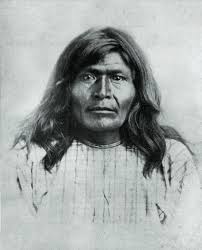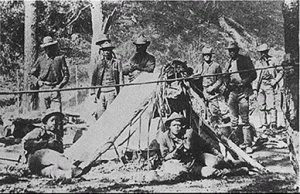Known as Beduiat or Bidu-ya to the people of Apache, Victorio Apache was a warrior and the chief of the Chihenne tribe of the Chiricahua Apache which is now known as New Mexico.

Born 1825 on the Black people of New Mexico, Victorio grew up as a part of the Chihenne Apache. Although little is known about his childhood, it is believed that Victorio was part Mexican. Lozen, his sister, was a known woman warrior who was also called as “Dextrous Horse Thief”.
In the early 1850’s, Victorio was regarded as the Chief of his group. He began to travel with Nana, Geronimo and the other Apaches leaders in his twenties, doing several attacks in the Northern Mexico. He joined the Mangas Coloradas in 1862 where they made attacks in Mexico and upon the meddling of the white settlers.
In 1863, the Mangas Coloradas converged with the U.S. troops under a treaty. Instead of aiming a peaceful negotiation, The U.S. Army took a Mangas Coloradas prisoner and then executed him on the 18th of January. This made Victorio and Cochise, also a powerful leader, very angry.
Victorio Apache’s War

Soon after, Victorio Apache formed a group of Mescalero and Eastern Chiricahua with around 300 members and they began to hit back against the U.S. Army. The military officers who battled against Victorio considered him as a leader of men and a sound strategist. In 1869, Victorio’s group was subjugated so they moved to a new reservation close to Ojo Caliente, New Mexico. They settled in Fort Craig, New Mexico for the meantime while waiting for the reservation to be completed.
The next year, Victorio and the 500 Mescaleros, Mimbrenos, and Mogollones were assigned to Ojo Caliente Reservation about fifteen miles Northwest of now known as Monticello.
Victorio claimed the land as their ancestral homeland and they were initially contented with the land because it had served them very well. Their population increased to around 3,000 and so the supplies coming from the government were not ample to nourish them all. Soon, they stray from the reservation searching on their own. Prior to that, they were held responsible for the damages in the nearby area, which was actually done by the Mexican bandits. In August of 1871, the U.S. Army endorsed the Apaches to be removed from Ojo Caliente towards Tularosa Valley which is seventy miles northwest.
In April of 1872, the new reservation was launched and then the first Indian occupants began moving. In June 1872, Victorio together with around 450 Apaches arrived. The rest of the Native Americans joined their relatives in Arizona. In 1874, Tularosa was deserted. The remaining Apaches returned to Ojo Caliente.
In 1877, Ojo Caliente was officially closed so they moved to San Carlos, Arizona reservation. Taza, descendant, and heir of the deceased Cochise led the people to Arizona. The conditions in the reservation were horrible so Victorio and his 300 followers fled from San Carlos reservation and started three years of attacks in New Mexico, Mexico, and Texas. Victorio was strongly pursued by the Texas Rangers and the Buffalo Soldiers.
In April of 1880, Victorio led the “Alma Massacre” together with his group. Many of the settlers became homeless and several people were killed. U.S. Army sent their troops from Fort Bayard in New Mexico to arrest Victorio and his group. The troops pursued Victorio towards the water holes in Sierra Diablo Mountains but after two unsuccessful endeavors to reach the water, the Apaches finally fled into Mexico.
On the 14th of October, 1880, the Mexican troops surprised Victorio and his group. They killed Victorio Apache as well as his followers. Only the women and the children survived and they were held captives in Chihuahua City for so many years.
how tall was victorious, Victorio sister, nana apache, chief Victorio quotes, tres Castillos massacre, tres Castillos mountains, Victorio family, alma massacre
